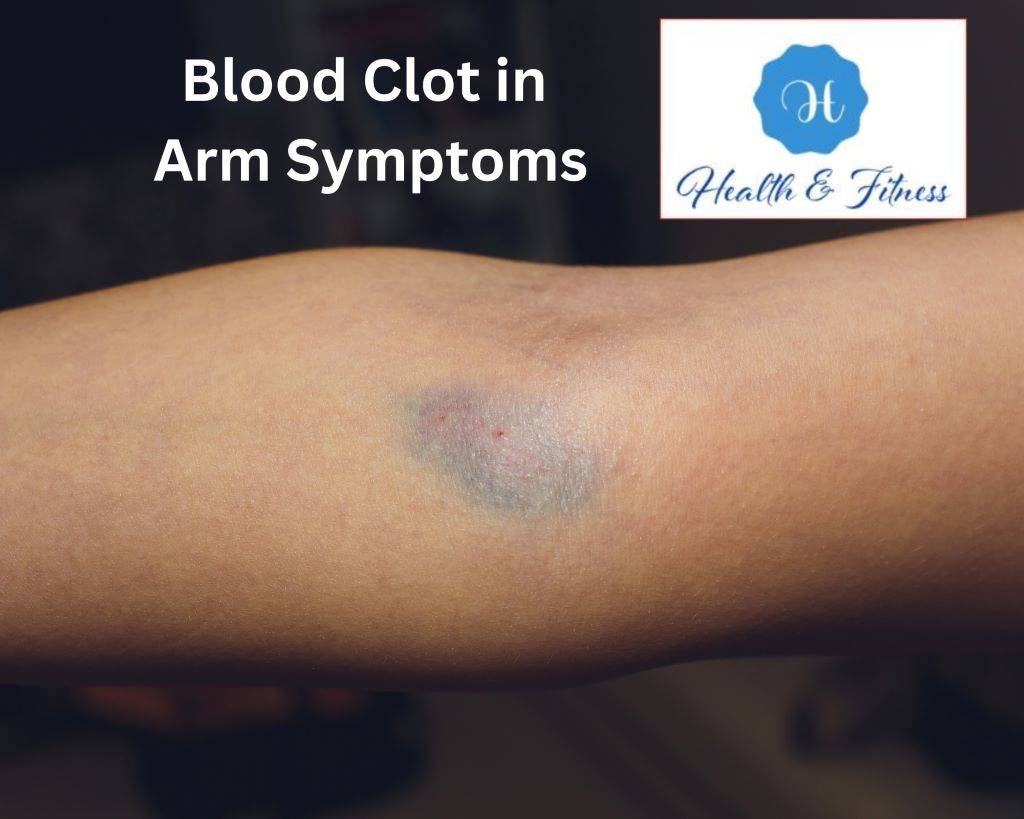Blood Clot in Arm Symptoms: What You Need to Know Now
Explore essential insights on blood clot in arm symptoms, causes, and prevention. Get the knowledge you need to act fast and seek timely medical attention.
Introduction to Blood Clot in Arm Symptoms
We all know that blood plays a crucial role in our body. It transports oxygen and nutrients to our cells, fights infections, and removes waste products. But did you know that sometimes, blood can clot inside your veins or arteries, and this can be dangerous? This article will explore blood clot in-arm symptoms, causes, risks, and prevention strategies.
Understanding Blood Clots in Arm Symptoms
A blood clot, medically known as a thrombus, is a semi-solid mass of blood that forms inside a blood vessel. Blood clotting is a necessary process that occurs to prevent excessive bleeding when we are injured. However, blood clots can sometimes form inside our veins or arteries without any obvious injury, leading to serious problems.
Blood Clot in Arm
Blood clots can form in any part of the body, but today, we will focus on blood clots in the arm. The arm is a common location for blood clots to form, and it is essential to be aware of the symptoms to seek timely medical attention.
Common symptoms of a blood clot in the arm include:
- Swelling in the affected arm
- Pain or tenderness in the arm
- Warmth over the area of the clot
- Red or discoloured skin
It is important to note that sometimes, a blood clot in the arm may not cause any symptoms. However, if you experience any of the above symptoms, it is essential to seek medical attention immediately.
Causes of Blood Clot in Arm
Blood clots in the arm can occur because of several reasons, including:
- Having a history of blood clots
- Long periods of immobility, such as long flights or bed rest
- Having a genetic predisposition to blood clotting
- Certain medical conditions, such as cancer or autoimmune diseases
- Hormone-based medications, such as birth control pills or hormone replacement therapy
Risks Associated with Blood Clot in Arm Symptoms
Blood clots in the arm can lead to several complications if not treated promptly, including:
- Pain, swelling, and skin changes in the affected arm characterize the post-thrombotic syndrome.
- Pulmonary embolism: A life-threatening condition that occurs when a blood clot breaks off and travels to the lungs.
- Stroke: A condition that occurs when a blood clot travels to the brain, blocking blood flow and causing brain cells to die.
Risk factors for developing blood clots in the arm include:
- Age: The risk of developing blood clots increases with age.
- Family history: A history of blood clots in your family increases your risk.
- Smoking: Smoking increases the risk of blood clots.
- Obesity: Being overweight increases the risk of blood clots.
Prevention Strategies for Blood Clot in Arm
Preventing blood clots in the arm involves making lifestyle changes and, in some cases, taking medications. Some prevention strategies include:
- Staying active: Regular physical activity can help prevent blood clots.
- Quitting smoking is a significant risk factor for blood clots, so quitting smoking is essential.
- Maintaining a healthy weight: Being overweight increases the risk of blood clots, so maintaining a healthy weight is crucial.
- Taking medications as prescribed: If you have a history of blood clots or are at high risk of developing clots, your doctor may prescribe blood-thinning medications.
Diagnosis and Treatment for Blood Clot in the Arm
If you suspect that you have a blood clot in your arm, it is essential to seek medical attention immediately. Your doctor will perform a physical examination and may order imaging tests, such as an ultrasound or a CT scan, to confirm the diagnosis.
Treatment for a blood clot in the arm may include:
- Anticoagulant medications: These blood-thinning medications help prevent the clot from getting bigger and new clots from forming.
- Thrombolytic therapy involves injecting a clot-dissolving medication directly into the clot.
- Compression stockings: These special stockings apply pressure to the arm to help reduce swelling and pain.
FAQs for Blood Clot in Arm Symptoms
1. Can a blood clot in the arm go away on its own?
Sometimes, a blood clot in the arm may dissolve on its own. However, it is essential to seek medical attention to prevent complications.
2. Could I exercise with a blood clot in my arm?
It is essential to seek medical advice before starting any exercise regimen if you have a blood clot in your arm.
3. What is the long-term outlook for someone with a blood clot in the arm?
With prompt medical attention and appropriate treatment, most people can fully recover from a blood clot in the arm.
4. Could I prevent blood clots in my arm?
Yes, lifestyle changes, such as staying active, quitting smoking, maintaining a healthy weight, and taking medications as prescribed, can help prevent blood clots in the arm.
5. How is a blood clot in the arm diagnosed?
Your doctor will perform a physical examination and may order imaging tests, such as an ultrasound or a CT scan, to confirm the diagnosis.
Conclusion for Blood Clot in Arm Symptoms
Blood clots in the arm can be dangerous, but most people can fully recover with prompt medical attention and appropriate treatment. It is essential to be aware of the symptoms and seek medical attention immediately if you suspect that you have a blood clot. Additionally, making lifestyle changes and taking medications as prescribed can help prevent blood clots in the arm.



